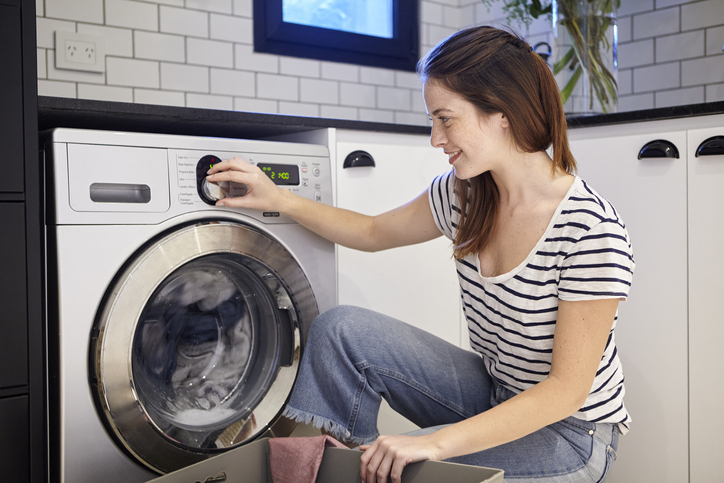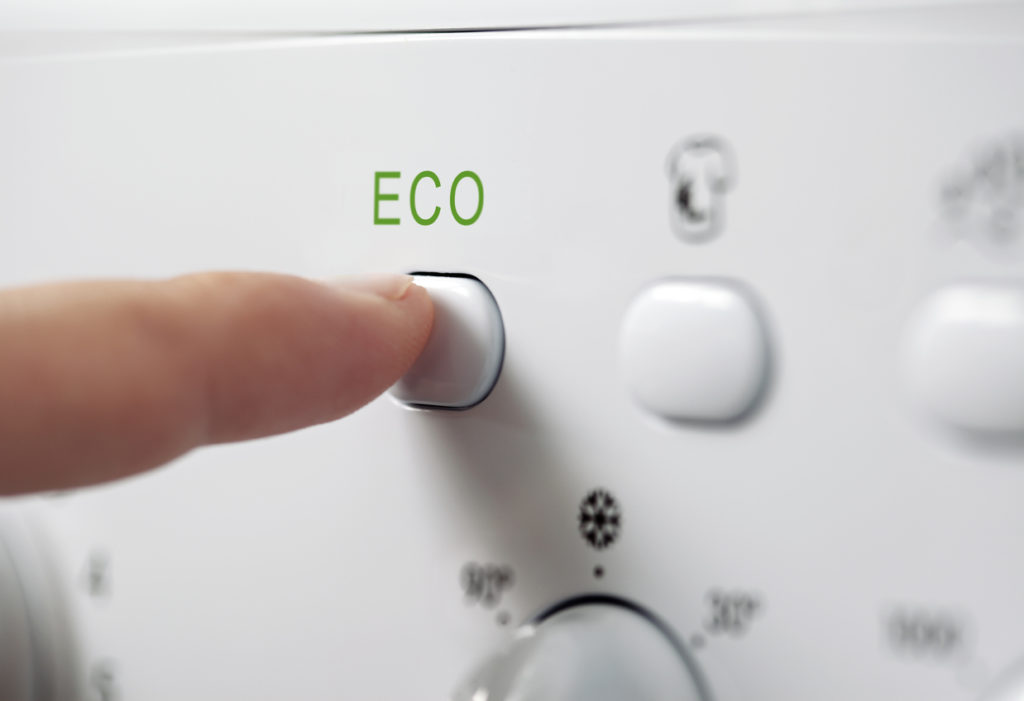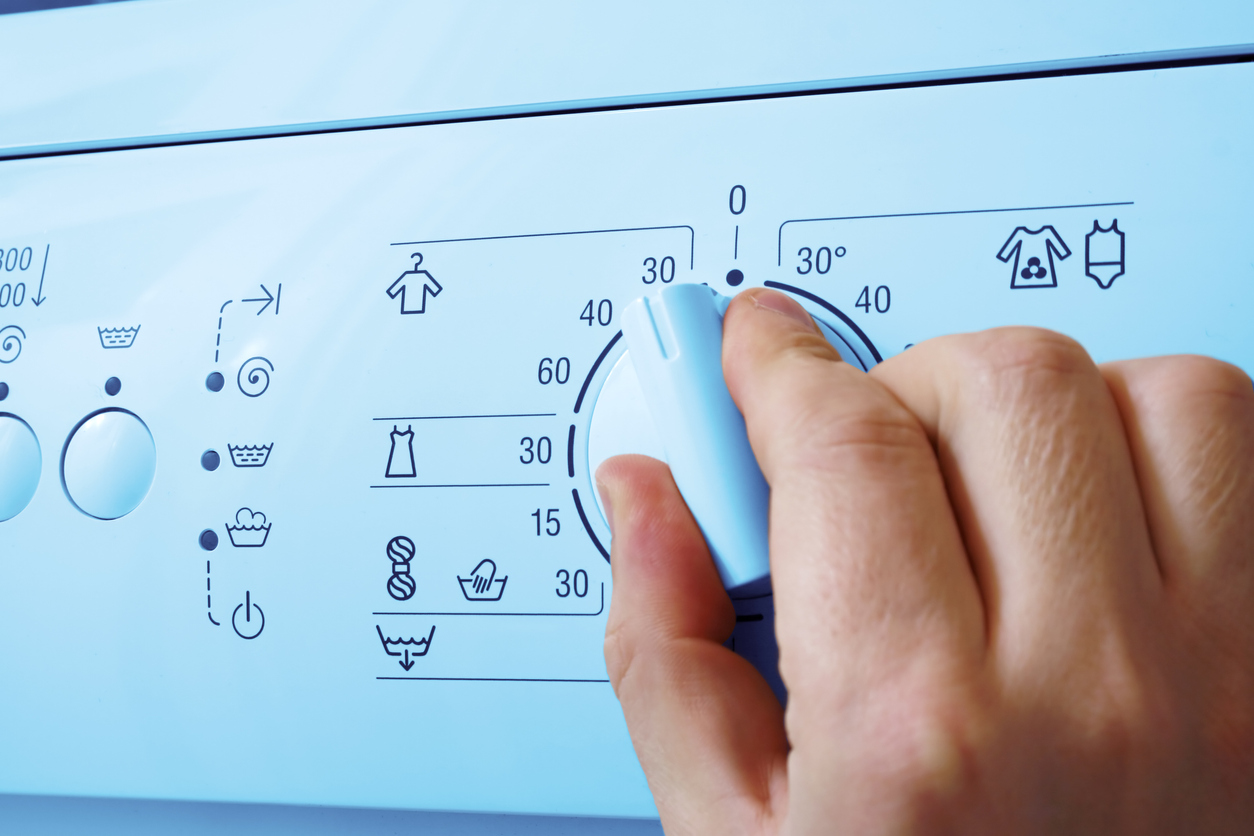Chances are you use your washing machine at least a couple of times each week. Like all appliances, some washing machines are more energy efficient than others. Naturally, you want to use the least amount of energy every time you wash a load of clothes. Not only is an energy-saving washing machine good for the environment, but it can also save on your household’s monthly electricity bill. The number of amps and the wattage of your washing machine are keys to learning more about its energy consumption.
How Many Amps Does a Washing Machine Use?
The typical washing machine uses 10 to 15 amps of electricity per load. However, washing machine amps can range from 5 all the way up to 20 per load. Normally, there’s a sticker on the underside of the washing machine’s lid that indicates the number of amps it uses. If you don’t see a sticker, you can find the number of amps in the owner’s manual you received with the machine. You can also check the manufacturer’s website for this information.
What Factors Determine the Total Number of Amps Used by a Washing Machine?
One washing machine may use 10 amps while another consumes 15 amps. Though the machines may be similar in appearance, they have some fundamental differences that account for the variation in amps.
Size of the Washing Machine’s Motor
One of the factors that determine how many amps a washing machine uses is the size of its motor. A large washing machine uses more amps because it has a larger motor than a smaller washer. It requires a larger motor because it needs more power to accomplish its purpose.
Hot Water Cycle
Heating water for the hot water cycle requires more electricity than any other washing cycle. But washing machine amps vary depending on how a washer gets its hot water for this cycle.
A washing machine that gets its water from a hot water heater doesn’t use a lot of amps during this cycle. This makes sense because another appliance is preparing the hot water for the washer’s cycle. Alternatively, some washing machines have an internal heater in their design. This means the machine heats its own water for its hot water cycle. A washer with an internal heater requires more amps.
How Do Temperature Settings Affect My Washing Machine Cycle?
Water Level
You may have a washing machine that allows you to adjust the water level for each load. When you adjust it to a high-water level, your appliance uses more electricity to wash the load. However, when you choose a medium or low water level, the machine uses less electricity to achieve its purpose.
Washing Machine Style
The number of amps differs depending on the style of the washing machine. A top-loading washing machine can use 12 to 15 amps of electricity. A front loader can use 11 to 20 amps of electricity per wash load.
Age of the Washing Machine
When you compare older washing machines with newer models, older machines tend to use more amps. This is because older washing machines were not designed with a focus on energy efficiency. Of course, the standards for energy efficiency have changed a lot over the decades!
What Is the Difference Between Washing Machine Amps and Wattage?
While a washing machine’s amps refer to its flow of electricity, its wattage refers to the power consumption rate.
How Many Watts Does a Washing Machine Use?
The average washing machine in a home’s laundry room uses from 400 to 1,400 watts. If you have a washing machine with 500 watts, it uses 500 watts per hour of operation.
What Factors Affect Washing Machine Wattage?
As with amps, there are certain factors that have an effect on washing machine wattage.
Style of the Washing Machine
A front-loading washing machine has an electrical wattage ranging from 700 to 1,500. A washing machine in a top-loading style has 900 to 1,200 watts. So, as you see, the style of a washer relates to more than just visual appeal.
- Spacious Capacity: The 4.5 cu. ft. capacity of this washer machine provides ample space for large laundry loads, making it ideal for daily use in homes and for large families
- Multiple Wash Cycles: Wash your laundry at home with this Black and Decker washing machine. Our clothes washer has 12 cycle selections to choose from for a variety of clothes, washes and needs
- Water Options Available: Our clothes washing machines offer 5 spin cycle options from no spin to extra high, and 5 water temperature choices from cold to extra Hot for laundry loads
- Safety Features: Our front load washing machine is ENERGY STAR qualified and features auto unbalance detection to ensure laundry is cleaned at peak performance, as well as delay start up to 24 hours
- Efficient Performance: The ENERGY STAR rated black and decker washer boasts a 1300 RPM max spin speed and is designed to conserve energy while maximizing efficiency
- Tough Action for Tough Stains: Our top load clothes washer features a Triple Action Impeller to tackle your toughest loads in three powerful ways: Spraying Action to attack dirt from every angle with a concentrated detergent mix, Wash Basket Action to move the wash basket back and forth, and Impeller Action to move clothes in a circular pattern
- More Laundry, Less Time: Our high-efficiency top load washer features Express Wash to clean small loads in just 30 minutes (based on a 3-lb load, default cycle setting), and Accela Wash to clean full-size loads up to 51% faster (compared to a standard 8-lb load, normal cycle, warm wash temp, extra heavy soil setting) - so you spend less time doing laundry
- Wash Your Way: Features 10 wash cycles to custom wash your loads including Heavy Duty, Whites, Towels, Delicates, and Express Cycles. Select from 4 temperature options and rinse with Extra Rinse to help protect sensitive skin. Soft Close lid has tempered glass and won’t slam shut
- Easy to Operate: Use the intuitive light-touch controls to select the load and cycle options that match the fabric types in each load. Plus, the convenient LED lights provides time remaining and cycle status information
- Reduce and Save: Energy savings includes Cold Clean which cleans gently & completely while using up to 90% less energy (when compared to the normal cycle, default settings, 8-lb load)
Size of the Washing Machine
A large washing machine uses more wattage than a smaller model. It takes more power to operate a large washer.
Age of the Washing Machine
Older washing machines tend to have higher wattage than the ones designed today.
How to Choose Your Washer Breaker Size
Washer breaker size relates to the voltage of the washing machine. A 120-volt washing machine requires a 20-amp breaker. A 20-amp breaker is standard for most household washing machines.
Why Is It Important to Select the Appropriate Washer Breaker Size?
The purpose of a breaker for a washing machine is to shut off the electricity to the circuit. The breaker shuts off when the circuit overloads. This is important because an overloaded circuit can lead to a fire or electrical shock. So, having the proper washer breaker size is an essential safety precaution for your home.
What Does the Typical Laundry Room Wiring Setup Look Like?
The typical electrical wiring in a laundry room includes two or sometimes three dedicated circuits. A washing machine needs a dedicated circuit because of the large amount of electricity required to operate the machine. Having a dedicated circuit helps to prevent an overload followed by a power shutoff.
The second dedicated circuit is for the clothes dryer. This appliance uses a lot of electricity as well. Some households have laundry room wiring with a third dedicated circuit for lighting. Others have a shared circuit powering the lights in the laundry room along with those in a nearby hallway.
Is It Safe to Use a Regular Extension Cord With Your Washing Machine?
No. The type of extension cord connected to a lamp or radio is not suitable for use with a washing machine. It can’t handle the amount of electrical current a washing machine needs. It’s best to make sure you can use the three-prong plug of your washing machine in an appropriate outlet nearby.
Ways to Reduce the Amount of Energy Used by Your Washing Machine
Most of the washing machines made today have an energy-efficient design. But there are still things you can do to reduce electricity use and save energy with each load of clothing.
Wash Your Items in Cold Water
One way to save energy is to make use of the cold-water cycle on your washing machine. If you have a load of lightly soiled clothes, then sending them through the cold-water cycle should get them clean. Reserve the hot water washing cycle for loads of laundry with a lot of dirt, odor, or stains. Checking the settings on your washer’s control panel takes just seconds, but it can save a lot of energy.
Adjust the Water Level

Make it a point to adjust the water level in your washer to suit the load size. Washing machines burn more energy washing a load in a high level of water than in a lower level. Why heat a large supply of water when you have just a few items in the load?
Select the washing cycle to suit each load of clothing.
Adjust the Spin Speed
If you have a washing machine that gives you the option of selecting a spin speed, set it on low. Limit your use of the high-speed spin cycle to items you need right away. Not surprisingly, the high-speed spin cycle consumes more energy than the lower speed.
Skip the Spin Cycle
If you have a load of lightweight clothing, sheets, or pillow cases, set your machine to skip the spin cycle. Lightweight items can dry in a relatively short time if you put them into the dryer without spinning them.
Utilize the Eco-Mode
Take a look at the control panel of your washing machine. Does it have an Eco-mode option? If so, it can reduce the energy consumption of your washing machine. Utilizing the Eco-mode for a load of laundry saves both electricity and water. Using the Eco-mode on your washing machine just a few times each week can make a big difference in your energy consumption.
Learning how many amps your washing machine uses gives you a clear picture of its energy consumption. This is valuable knowledge as you plan your weekly washing schedule and adjust the washer’s settings. Also, it’s helpful information to keep in mind when you go to purchase a new washing machine for your home.



